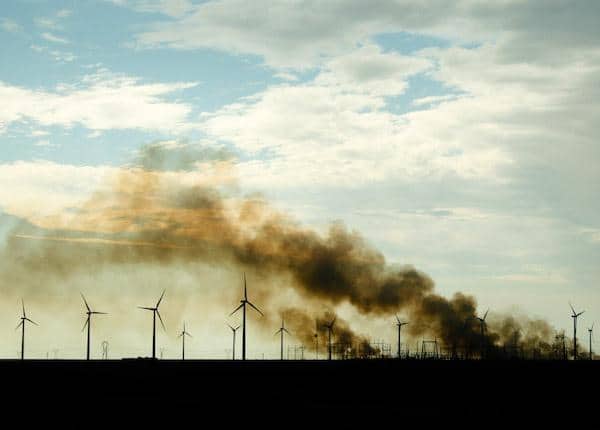
What was that again about another bailout for the nation’s aging fleet of coal and nuclear power plants?
A Grand Vision For US Wind Power
If all goes according to plan, the Grain Belt Express will be a significant breakthrough for the US wind industry. The project is just one of a suite of massive, long distance clean energy transmission lines proposed several years ago by a company called Clean Line Energy.
That grand vision has been held up by regulators in various states, and the Grain Belt Express proposal ground to a halt in 2015, when it hit a brick wall in Missouri.
After some legal back and forth, last summer the Missouri Supreme Court breathed new life into the project.
Another change in fortune came last November, when Clean Line sold the Grain Belt development rights to the Chicago-based company Invenergy.
In the latest development, Missouri PSC officially cleared the way for Grain Belt. As reported by our friends over at the St. Louis Tribune, the commissioners unanimously voted to greenlight the transmission project last Wednesday.
Wind Power By The Numbers
By far, the bulk of electricity carried by Grain Belt will go straight through Missouri without stopping off. The remainder still represents a significant new addition to the state’s grid, at the equivalent of 200,000 households.
PSC anticipates significant benefits to Missouri from that slice of the Grain Belt, including environmental benefits from displacing thermal generation.
If you caught that thing about displacing thermal generation, that’s a red flag for natural gas stakeholders as well as coal.
PSC foresees that the new transmission line will reduce water consumption and reduce emissions of sulfur dioxide, nitrogen oxides, and carbon dioxide.
In addition, the commissioners gave the ol’ Bronx cheer to the argument that renewable energy is unreliable. The ruling notes that “the Project would have a substantial and favorable effect on the reliability of electric service in Missouri.”
The economic numbers are pretty impressive, too. The PSC ruling anticipates some serious economic activity in the state:
The construction phase of the Project will support 1,527 total jobs over the three years of construction and create $246 million in personal income, $476 million in gross domestic product, and $9.6 million in state general revenue for the state of Missouri. The economic impact of the Project in its first year of operation will support 91 total jobs and create $17.9 million in personal income, $9.1 million in gross domestic product, and $720,000 in state general revenue for the state of Missouri.
PSC also anticipates about $14.97 million in easement payments during the first year of operation. Each year after that, PSC anticipates 28 jobs along with “$2.6 million in personal income, $4.2 million in gross domestic product, and $111,000 in state general revenue.”
Wait, there’s more. PSC also notes that eight counties in Missouri will reap about $7.2 million annually in property taxes from the Grain Belt Express.
The Rise Of Wind Power
If you’re still not convinced that the PSC commissioners have put on the wind advocacy hat, consider that they went out of their way to position wind energy squarely in the context of the global energy transition:
There can be no debate that our energy future will require more diversity in energy resources, particularly renewable resources. We are witnessing a worldwide, long-term and comprehensive movement towards renewable energy in general and wind energy specifically. Wind energy provides great promise as a source for affordable, reliable, safe, and environmentally-friendly energy.
That doesn’t leave much room to grow for fossil fuels and nuclear energy.
PSC members may be taking a lesson from their neighbors and thinking that it’s time to play catch-up. Among the 50 states, Missouri weighs in at a less-than-stellar mark of #21 in installed wind capacity, even though it is ringed by wind power heavy-hitters including Illinois (#6) to the east and Iowa (#2) to the north, in addition to Kansas (#5) to the west.
The Wind Power Network Takes Hold
Missouri’s poor showing is partly due to its location just outside of the rich “wind belt” that cuts through the nation’s midsection. The state has fairly decent wind resources, but importing wind power from other states can make sense when you factor in land use issues.
According to PSC, the new transmission line will pull only nine acres of agricultural land out of service in Missouri.
If you’re wondering about Missouri’s southern neighbor, Arkansas, that’s a good question. Missouri is not a prime wind state and the resources drop off even farther to the south. That could explain why Arkansas still has virtually no installed wind capacity, though politics could also be in play.
Politics or not, Arkansas ratepayers are still on track to realize the benefits of wind power. Last year the Louisiana Public Service commission approved the Wind Catcher transmission project.
The project comes under the umbrella Southwestern Electric Power Co. The utility is packaging the new 350-mile transmission line with a massive 2,000 megawatt wind farm in Oklahoma.
The lucky customers will include Arkansas as well as Louisiana, Texas and Oklahoma.
What’s Next For The Grain Belt Express
The news about the Grain Belt Express is encouraging, but keep that bubbly on ice for now. Apparently the regulatory process has timed out in Illinois, which previously approved the project. Invenergy has to figure out a way to kickstart the process again.
Another delaying factor involves compensation for property owners along the route of the transmission line in Missouri. That could open up a whole new can of worms, so stay tuned for more on that.
Meanwhile, keep an eye on the inevitable march of the taller wind turbine. Taller turbines can take advantage of steadier winds at higher altitudes. They would change the wind game all throughout the southeast and other wind-poor regions of the US.
